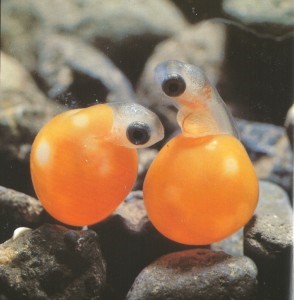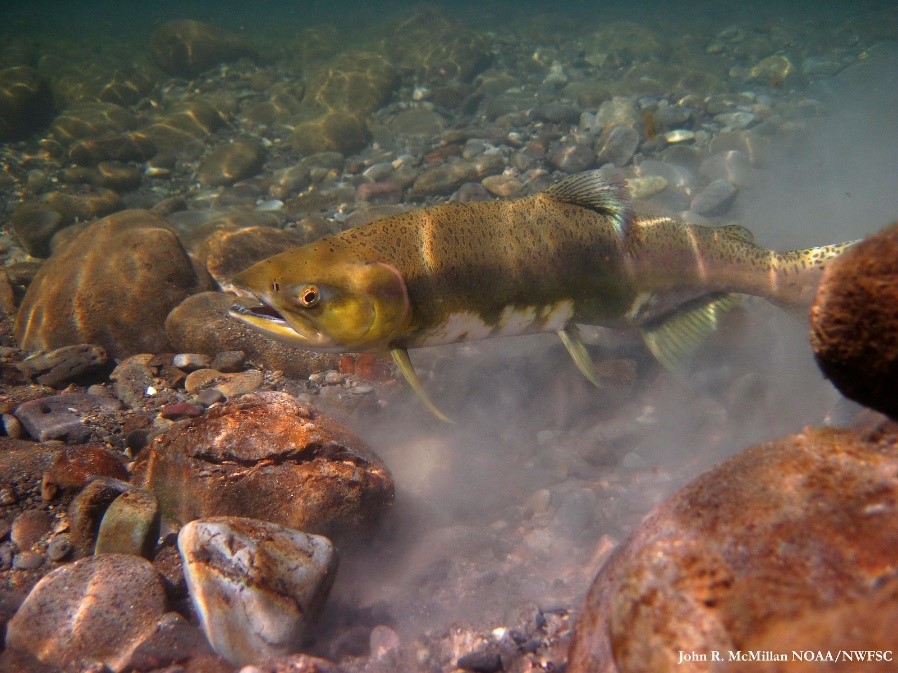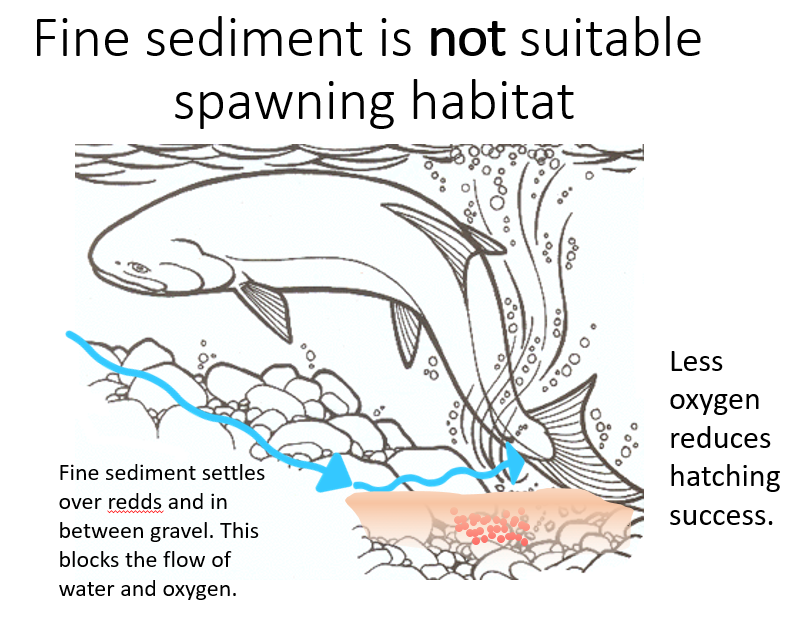
Ecology is starting conversations about rule changes to help salmon recovery
All across the state, people and organizations are asking what they can do to help salmon and orca. There are simple, every day actions we can all take to prevent water pollution, like limiting the amount of chemicals used on lawns, as they can be washed into streams and rivers. At Ecology, we're taking a wide variety of actions to better protect and restore these iconic species, including grants for community projects, reducing toxic chemicals from getting into water, providing scientific support, and taking regulatory actions.
Salmon spawning and water quality
Salmon play a critical role in fresh and marine water ecosystems. Unfortunately, salmon populations have been declining in the state for more than a decade. In Washington, 15 distinct populations of salmon and steelhead are listed as either threatened or endangered, and according to the most recent State of Salmon report, eight of those populations are either getting worse or not showing signs of recovery.
To support salmon recovery, we're considering making changes to the state’s fresh water standards. These changes could help improve the physical habitat and water quality for rivers and streams to benefit all salmonids; including native trout such as cutthroat, redband, bull, brown, rainbow, and brook. Specifically, we want to ensure salmon nests (called redds) have enough oxygen to support incubating eggs and newly hatched young. We also want to better protect these nests from the effects of too much fine sediment in the water.
“Salmon need a healthy environment to spawn and thrive. If we want more salmon in our rivers, we need to continue to help improve their environment,” said Heather Bartlett, Ecology’s Water Quality Program Manager. “The rule changes we are considering would help improve the spawning habitat for salmon across the state and compliment all of the great work being done to rebuild and protect salmon habitat.”
Oxygen
Larval salmon, called alevin, stay protected between the stream gravel until they absorb their yolk sack and emerge as young fish. Image by pnwsalmoncenter.org
We're considering adding an additional measure to the existing criteria to help ensure habitat conditions in gravel are ideal for salmon spawning. We want to make sure our standards provide the necessary conditions for growth, survival, and reproduction. Improved standards would help us better identify waters throughout the state that have oxygen issues that could be affecting salmon spawning.
There are a number of reasons why a water body could have low dissolved oxygen, including warm water temperatures and excess nutrients.
Fine sediments
A chum salmon excavates a loose gravel area to create
a nest
Fine sediments are an issue for salmon nests because sediments can settle on the nests and block the flow of water through the gravel, depriving eggs and larvae of the oxygen they need.
In addition, adding fine sediment criteria is consistent with our agreement in the 2018 U.S. District Court Stipulated Order of Dismissal between Northwest Environmental Advocates, EPA, and Ecology. In the agreement, we committed to completing draft rule language by Oct. 18, 2021.
Fine sediment is the result of soil erosion, which can happen for a wide variety of reasons, including development or construction, agricultural practices, and forestry. There are generally best management practices in place for these industries and activities to mitigate erosion and sediment pollution.
Next steps
This is the development phase of the rule, which means we have not yet drafted a proposed rule. Over the next few months, we'll meet with tribes, stakeholders, and government agencies about the potential rulemaking, to seek their ideas on solutions, alternative approaches, and concerns.
We plan to propose rule language for comment in fall 2020. At that time, we will host workshops and public hearings. After evaluating the feedback we receive, we'ill make decisions on changes to the water quality standards for dissolved oxygen and fine sediments in fresh water.
To learn more about the rulemaking, visit our rulemaking webpage.





